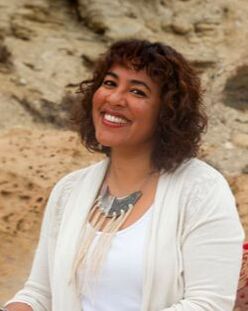|
One of my surfing friends in California told me earlier this year I had to check out a little town called St. Jean De Luz in Basque Country, France. In addition to being a quaint Basque town, there is a wave there that breaks on a particular swell. So, in November, I made my way towards St. Jean De Luz and the surf break with some friends. As I walked down the beach at sunset taking in all the beautiful colors and reflection of the sky and the water, I realized I had seen this place before.
I used to do a meditation a few years ago where I’d imagine a scene somewhere in Europe. I wasn’t exactly sure where it was but it could have been coastal Italy. There were old buildings cascading the coastline overlooking a bay that had tiny rolling waves in it. I’d imagine myself in the sunset bobbing up and down in the water, taking in the view. The picture I had envisioned in my mind’s eye from this meditation was now here right in front of me. I almost couldn’t believe it.
The subconscious mind has a way of directing us to shape our reality. Our mind has a sort of internal GPS, if you will. For this reason, I cannot stress enough the importance of vision and reflection. When we reflect on experiences, we move memories from one area of the brain to another, which helps us use those experiences towards making larger contextual decisions in our lives. So, in the spirit of vision, I wanted to share some tips and tools with you for your own year-end vision and self-reflection. These are tips and tools I’ve picked up from my own processes and from coaches I have worked with personally. They can be used for yourself, and also as a fun exercise with your teams. Step 1: Answer these Reflection Questions
These are from coach and colleague Cynthia Sumner of True Nature
Step 2: Set Your Intentions for The Year to Come
Write down each of these areas of your life. For each one, rank how fulfilled you feel on a scale of 0-10 next to each area. Zero means it is non-existent in your life. 10 means you are completely fulfilled with that area. Then, write about that area and what made you choose the number you did.
Next, for each area, set an intention for yourself for the New Year. What intention would you have to set for each area to raise the number at least 1 point? Take, for example, the category of friends. I will give myself a 7. Why? This year has been about deepening existing connections with my friends, and opening more space to celebrate with my friends. It has also been about making new friends and connections on my travels without losing connection to my friends at home. It has also been about leaning on friends, and feeling grateful for my connections with them. The intention I’d like to set for 2019 for my friends is to be generous. I want to deepen my connection with friends through increased generosity with my time and resources. Got the picture? Great! Do this for each category. Step 3: Help Your Team Set their Intentions
Want to use this as a reflective end of year practice with your team? Try these categories instead, taken from a professional wheel of life tool created by The Coaches Training Institute:
Step 4: Create Your Vision Using Visuals
Though this is optional to the process, I’d just like to stress how powerful it is to move vision from thoughts and written words to images. There is something powerful about an image that the brain can really grasp onto.
Gather images and words from magazines and clippings, or other art that appeals to you. Images can include family pictures, quotes, and other meaningful things too (that you don’t mind gluing). Don’t think too much about it. Just go with your gut and do what feels easy and FUN! For magazines and visuals, consider going to your local library. Invest in nice paper from an art supply store. Consider using paper with textures and designs. DO NOT be stingy with your vision board. Think of this as a piece of art you are creating for your space, home or office, one that will invite discussion and curiosity from friends, family, co-workers, or employees who may visit you. You may also want to do this with your team as a fun exercise. Get out the art supplies and have a fun session helping people create visuals for the intention and vision they’d like to set for themselves in your business or organization for 2019. Most importantly, have fun! Here’s to starting the year with intention and clarity! Like what you read? Sign up for my monthly e-news!
2 Comments
I come from a background where it was not encouraged for women to set healthy boundaries. In the nonprofit cultures of my time, very much influenced by baby boomer culture, I saw people literally contorting themselves to make things happen. They had minimal resources to try to accomplish things that did not seem humanly possible. Best of luck if you tried to set healthy boundaries in these cultures. Doing so often resulted in subtle backlash from those that saw themselves as "truly" fighting the fight. Unfortunately, this dynamic quickly led to burnout, resentment and unhealthy work cultures.
Learning to set my own boundaries has been one of the most enlightening things. It has also been one of the hardest. Brené Brown, the world’s top vulnerability researcher, said something very profound once about boundaries. She said simply that in all her research, she’s found that the most boundaried people were also the most compassionate. In her book Rising Strong, she makes the case for setting boundaries and posits that resentment comes from giving up our power unwillingly. If the world’s most renowned researcher on vulnerability is telling us this, then why does it feel so hard to find it in the surf–life metaphor? Can you still be one who goes with the flow and also be a little “square” and set boundaries? Life is like a wave. Ride it. Expect ups and downs. OK. Got that. If you don’t like the wave, change your equipment (i.e., your internal surfboard) or get off the wave. OK. Check. Already made that metaphor once. And, oh yeah: Learn to recognize and set boundaries to have a more fulfilling life. Umm, hold up! Exactly how does that translate into my sea of oceanic metaphors? A buoy? Filling up a plastic pool with ocean water? Isn’t this some Western, man-made, left-brained concept? How do you overlay the concept of boundary onto something that has flow at the core of its philosophy? The more I explored this boundary stuff, I realized even the coolest of cool cultures (e.g., surf culture) sets boundaries ALL THE TIME. Most surfers go online now to check surf and ocean conditions through sites that list current and predicted surf conditions. These are based on a number of factors like wind, buoy readings etc. When it gets big, as in double to triple overhead in a Northern California report, you often find the reporter ending their summary with the following: “Be safe and know your limits,” a fair warning to surfers that conditions may warrant a particular degree of experience and skill. It occurred to me that when we look at that report, or scan conditions of the ocean ourselves, we are making a conscious decision of whether to go or not to go, taking steps to protect our safety. And that’s when it all made sense to me: The concept of exercising boundaries is actually more about accessing your own internal wisdom, listening and getting clear with what you are or are OK or not OK with in a situation, or relationship. It’s less about anything tangible at all. As surfers, we set boundaries all the time (well, at least I do). In a culture where it’s rewarded to keep pushing the boundaries on things, it’s no wonder why we as people have a hard time setting them in normal life. After all, boundaries don’t sound particularly sexy—they are the opposite of edgy. They’re very square. But they are so necessary to living and leading in a healthy way. Even extreme athletes, for all they surmount, have their own boundaries. And they differ from person to person. What’s OK for them may certainly not be OK for me. OK so how does this relate to you? If you feel resentment towards something or feel too accommodating, perhaps in a relationship, I invite you to look at how you are setting your boundaries. Below, I offer you a few ways to think about boundary-setting. 1. Realize when something is off. Oftentimes, when we can tune into when something does or doesn’t feel right in a relationship, situation or interaction, that is a sign that we know a boundary needs to be set. Perhaps it is the colleague suffering from a compulsion to make snarky comments that make you feel bad. Or perhaps it’s that friend that always flakes out on a plan at the last minute, leaving you high and dry (and annoyed). Again. If it doesn’t feel right to you, chances are you need to look at it and set a boundary with that person, thing or relationship. 2. Name it. If something doesn’t feel right or feels off, name what feels off. Is it a value that is being stepped on? Is too much being asked of you? Are you feeling overly accommodating in a relationship? If you can name exactly what it is that feels off to you, then you will be more empowered to know exactly what boundary you need to set. An extreme example: I have a friend who abruptly ends calls with her friends the minute she feels her energy is being sapped. Though this is an example of a more extreme boundary, it’s a boundary nonetheless, and she’s clear with herself what’s not OK for her. (I like to use extreme examples because they are easier to remember). 3. Communicate…or not. Sometimes, setting boundaries requires clear communication with someone, and sometimes you can set boundaries without having to communicate at all, simply by changing your behavior. My favorite segue I learned from one of my coaches for communicating a boundary is simply to say: “X,Y,Z doesn’t/didn’t work for me. Here’s what does.” Boom - A simple and powerful way to get your boundary across without sounding needy or complaining. 4. Set your boundary. I had friends that would religiously cancel plans on a whim at the last minute. It would drive me nuts, as I would have blocked off time for them in my schedule only to have them cancel, and it would be too late for me to make other plans. Here’s what I say now: “Just want to confirm our plans for tomorrow. Let me know by X PM if we are a go.” That way, it gives them the out to cancel, and if they do, I have sufficient time to plan something else. Be kind to yourself. Many of us didn’t come from backgrounds where it was appropriate to state and defend our boundaries, and so it is very difficult and scary for us to do so. If you sense something is up with someone—a partner, employee, friend, boss—don’t be afraid to ask into it, and create a safe space for people to share what’s up. Perhaps you might have crossed an unstated boundary without realizing it. Opening up vulnerable and authentic communication can help you both realize the boundaries that are important to you. Where have you had to set better boundaries? How did you do it? Like what you read? Sign up for my monthly e-news!
|
AuthorFarhana Huq Archives
June 2023
Categories
All
|
Copyright 2014-2024 Surf Life Executive Coaching








 RSS Feed
RSS Feed